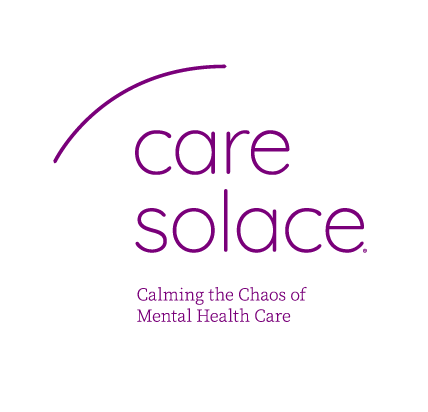
HEALTH AND WELLNESS
Mental and Physical Health
We encourage our students to take care of not only their physical health, but mental and emotional health as well. It’s important that we support one another, especially if you or someone you know may be facing a mental health concern.
Partners in Care with Care Solace
Care Solace helps individuals find mental health care providers and substance use treatment centers. Their Care Companion™ team is available 24 hours per day, 7 days per week, and 365 days per year to quickly connect you to carefully verified providers in your community. Students, staff, and families may access Care Solace services in two ways:
Call (888) 515-0595 at any time. Support is available in 200+ languages. A dedicated Care Companion™ will help you every step of the way to research options, secure appointments, and follow up to make sure it is a good fit.
For an anonymous search, answer a few questions to get matched with an extensive list of care providers at www.caresolace.com/ohiohipoint
Care Solace is now available for use at no cost to you. They will connect you with providers accepting all medical insurances including Medicaid, Medicare, and sliding scale options for those without insurance. All information entered on the Care Solace tool is completely confidential and securely stored.
Please note, that this service is an optional resource available by choice and is not mandatory to use. Care Solace is not an emergency response service or mental health services provider. In the event of a life-threatening emergency, please call 9-1-1 or the National Suicide Hotline at 1-800-273-8255.

Student Wellness Funds and DPIA Funding
Ohio Hi-Point is committed to the mental and physical health of our students. Our Student Wellness Objectives are focused on: mental health, physical health and safety, self-esteem, and self-confidence. Learn more about OHP's programs to support these priorities by clicking the button below.
Student Illness
Ohio Hi-Point Career Center wants your student to learn and be successful. School attendance is linked to learning. However, there are times when your student may be ill and should stay at home until he/she feels better or is no longer contagious to others. Below are some guidelines to help you determine when your student should stay home.
Temperature above 100° by mouth (fever free for 24 hours without taking fever reducing medications before return to school)
Vomiting or diarrhea (symptom free for 24 hours before returning to school)
Shortness of breath or wheezing during normal activity
Cough that interrupts normal activity
Pain from earache, sore throat, or recent injury
Yellow or green drainage from eye(s)
Rash or draining sores
Student Health Issues that are not diagnosed as COVID-19
Ohio Hi-Point will follow the protocol below for health issues not diagnosed as COVID-19:
A student sent home with a fever must stay home until they are fever free without medication for over 24 hours AND improvement of all other symptoms (if any) for 24 hours.
The student’s temperature will be taken upon return to OHP.
Any other illnesses or injuries that are not related to fever should be handled in the routine manner according to district policy.
The following are Ohio Department of Health Guidelines for some of the more common childhood illnesses and the recommendations of the School Nurse. Your medical provider should be contacted for diagnosis and treatment.
Common Cold: Symptoms include irritated/sore throat, watery eyes, runny or stuffy nose, sneezing, fever, chills, cough, generalized discomfort. Your student should remain at home only if symptoms will interfere with their ability to learn. It is recommend to seek medical care for fever, green/yellow eye drainage or symptoms lasting greater than 7-10 days.
Fever: If your student's temperature is 100 degrees Fahrenheit or greater (or 1 or 2 degrees above the child’s normal temperature) s/he should remain home until s/he has been fever free for 48 hours, without the use of fever reducing medication. Remember, fever is a symptom indicating the presence of illness. Students with a fever should not be sent to school after being given a fever reducing medication.
Vomiting and/or Diarrhea Due to Intestinal Virus: Diarrhea is defined as 3 or more loose stools in 24 hour period.Students with diarrhea may have additional symptoms of nausea/vomiting/stomachache/headache/body aches/and/or fever. Your student should be without vomiting, diarrhea, or fever for 24 hours (without the use of fever reducing medication) before returning to school.
Influenza: Symptoms are abrupt onset of fever, chills, headache, sore muscles. Runny nose, sore throat and cough are also common. Your student should remain home from school until symptoms diminish and your student has been fever free for 48 hours, without the use of fever reducing medication.
Head Lice: Lice are small wingless insects that lay eggs called nits. Nits attached firmly to the hair shaft near the scalp. Symptoms are itching/irritation to the scalp and may feel like something is moving in their hair. They are small white specks that are commonly seen behind the ears and along the hairline. Following a lice infestation, your student can return to school after treatment with a pediculicide shampoo, nits removed and being cleared by the school nurse.
Pink-eye (Conjunctivitis): Redness or swelling of the "white(s) of the eye(s), or inside the eyelid, discharge from the eye(s), itchy or scratchy, crusting of the eyelid(s) or eyelashes. Your student is not be at school with purulent (pus) drainage from the eye(s). Your student can return to school after 24 hours of an effective antibiotic and drainage from the eye(s) has stopped.
Strep Throat: Symptoms of strep throat include fever, red throat with pus spots, tender and swollen lymph nodes (glands). Symptoms do vary for strep throat. Your stent can return to school after 24 hours of an effective antibiotic and fever free for 24 hours without taking a fever reducing medication.
Stop the Spread of Germs
OHP encourages all students, staff, and community members to do these simple steps to ensure we're meeting health and safety protocols:
Avoid contact with people who are sick
Avoid touching your eyes, nose and mouth with unwashed hands
Wash hands often with soap & water for at least 20 seconds. If you do not have soap or water on hand, use an alcohol-based hand sanitizer with at least 60% alcohol content
Cover your cough or sneeze with a tissue and throw tissue in trash can
Clean and disinfectant frequently touched surfaces and objects
Wear cloth masks when out in public when social distancing is not easily done
Continue to practice social distancing of 6 feet in public areas
